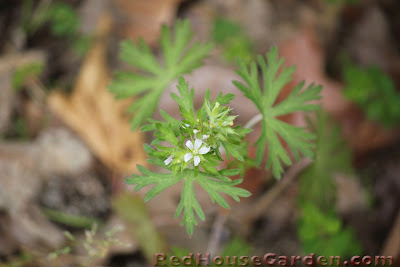I have to admit, it was Hunger Games that did it.
I've always looked at weeds as my enemy, useful only for bugs and rabbits to eat. A constant source of frustration for a gardener, I am forever pulling them out of my lawn and garden. Why do there have to be so many of them? And why do they have to grow so quickly?! What use are they?
Then I read Hunger Games. The post-apocalyptic Hunger Games trilogy by Suzanne Collins is about children from very poor areas who are forced to fight each other in a gruesome reality television show, the winner receiving food for them and their family for life. In one part, the main character can't find any food and believes that she and her family are going to starve to death - and then she sees the first dandelion greens of spring and realizes that they can live off the land.
No, this garden book review is not actually on Hunger Games (the gardening related part being a very small jot in this book)! It was just the impetus that made me realize how useful certain weeds are and how advantageous it must have been in days past to have an abundance of these quick growing plants.
Thus along the same lines, I decided to read and review the book Weeds: Friend or Foe? by Sally Roth.
Roth begins by discussing what a weed is and where they come from. It's pretty evident that one person's weed might be another person's flower, and vice versa. Gardeners may love poppies and cornflowers, but wheat farmers do not. I always thought that Virginia creeper was a weed in my garden, but then I found gallon containers of it being sold at a local nursery for $25 apiece!
So are particular weeds friends or foes? Roth discusses the pros and cons of different plants that are considered weeds in the middle section of the book. If one still considers the weed to be an enemy, she also tells you the best ways to get rid of it!
 |
| Some might consider these pretty forget-me-nots to be a weed |
Several well-known, rampant weeds are not only edible, but extremely nutritious. These include pigweed, chickweed, white clover, and, of course, dandelion greens.
 |
| Dandelion greens |
Many weeds also have medicinal properties, such as yarrow, comfrey, burdock, and cinquefoil, and were used in times past as remedies for various ailments.
 |
| Cinquefoil can be used to sooth toothaches and mouth sores. |
Of course, many plants considered weeds such as crabgrass, ragweed, and poison ivy also have great benefits for wildlife, offering them food or shelter.
 |
| Bluebirds, Tanagers, and Grosbeaks are among the many birds that love the berries of poison ivy plants. |
Some other benefits of weeds include adding nitrogen to the soil, reducing soil compaction, possible lawn alternatives, and, if attractive looking enough, a possible addition to one's garden. I really enjoyed reading all the trivia about some of the different plants. The author even gives recipes for home remedies and explains how some of these plants can be prepared medicinally!
 |
| An infusion of Chickweed leaves can be used to 'sooth the stomach and bowels'. |
So were any of the weeds in this book considered foes and not friends? There were several plants with which the author did not find much to appreciate, especially when it came to some of the invasive non-natives. The last part of the book delves into weed prevention and methods of elimination, physical, organic, and chemical. My favorite chart in the book lists different types of weed problems and gives the best herbicide for that particular job, noting if there are any possible health or environmental hazards for that particular herbicide.
 |
| Is there anything that can save me from the infestation of yellow wood sorrel??!! |
The only fault that I can find with this book is that some of the profiled plants looked too friendly and had only pictures of their flowers shown - not so helpful when I am trying to identify weed sprouts in my lawn. I was, however, able to identify several weeds that I had been wondering about.
 |
| I had been wondering what this shrub with brilliant red stems that I had seen in the woods was. Apparently it's actually a large weed called pokeweed. |
I found this book to be interesting and extremely informative. Now it is not just dandelion weeds that I see in a new light - though that doesn't necessarily mean that I want them in my lawn.
 |
| Still not sure if you're a friend or a foe... |
To find some other great gardening books out there, check out the monthly Garden Book Reviews over at the site Roses and Other Joys.
